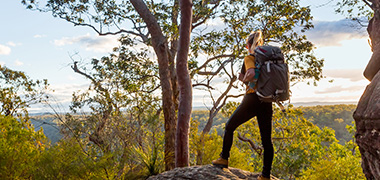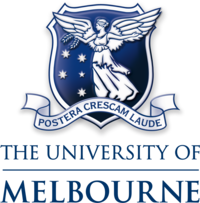
How do I become a indigenous land worker?
Bachelor of Arts (Indigenous Studies)
- There are no mandated entry requirements.








Bachelor of Science (Ecology and Conservation Biology)
- There are no mandated entry requirements.



Bachelor of Science (Environmental Management)
- There are no mandated entry requirements.




Bachelor of Science (Geographical Science)
- There are no mandated entry requirements.



Related occupations
Artist
An Artist creates artworks for sale or public viewing, specialising in various media, collaborating with others, and managing multiple projects.
Painter
Painters create and display artworks, working on commissions or personal pieces, requiring creativity, skill, and strong communication.
Aboriginal Dance Instructor
An Aboriginal Dance Instructor teaches cultural dance techniques to individuals or groups, preparing them for performances while promoting Aboriginal culture.
Government Policy Advisor
A Government Policy Advisor offers expertise on policies and planning, collaborating with officials and groups to create documentation and reports.
Policy Adviser
A Policy Adviser develops, analyses, and improves policies for government, businesses, and NGOs, conducting research and making recommendations.
Heritage Consultant
A Heritage Consultant advises on preserving heritage assets, offering insights on historical value and conservation for restoration projects.
Land Management Officer
A Land Management Officer manages sustainable land use, develops strategies, ensures legal compliance, collaborates on assessments, and promotes biodiversity.
Cultural Heritage Consultant
A Cultural Heritage Consultant assesses and manages cultural heritage sites, advocating for their preservation and compliance with regulations.
Cultural Anthropologist
A Cultural Anthropologist studies societies and cultures through fieldwork and analysis to enhance understanding and preserve cultural heritage.
Common questions
How much does an Indigenous Land Worker earn?
In Australia, a full time Indigenous Land Worker generally earns $1,320 per week ($68,640 annual salary) before tax. This is a median figure for full-time employees and should be considered a guide only. As you gain more experience you can expect a potentially higher salary than people who are new to the industry.
What are the job opportunities for an Indigenous Land Worker?
The number of people working in this industry has dropped slightly over the last five years. There are currently 4,200 people working in this field and some of them specialise as an Indigenous Land Worker. Indigenous Land Workers may find work in regional, rural and remote areas of Australia.
Source: Australian Government Labour Market Insights
How do I become an Indigenous Land Worker?
If you’re interested in a career as an Indigenous Land Worker, consider enrolling in a Certificate III in Indigenous Land Management. This course will explore ways to interpret Aboriginal culture, follow Aboriginal cultural protocols and work with an Aboriginal community or organisation. This qualification also covers topics including native animal rescue, pest control, landscaping and natural area restoration.
Further reading


Choosing a security licence course in Australia: A step-by-step guide for jobseekers
10th November 2023)

